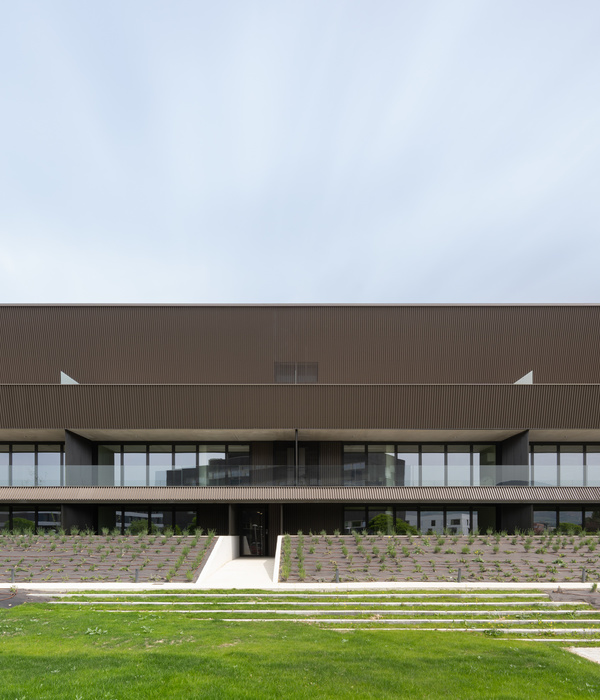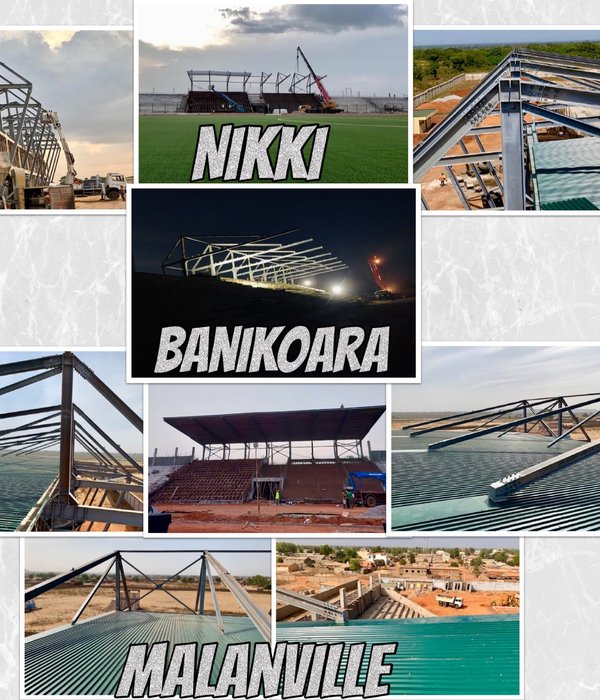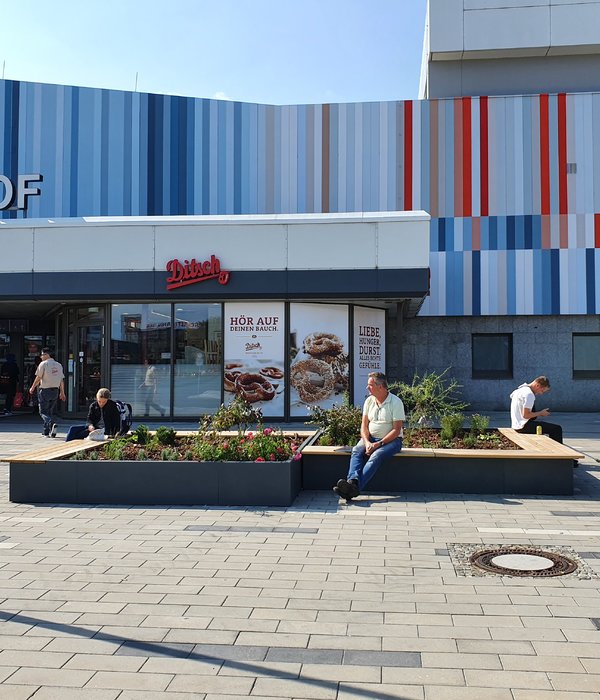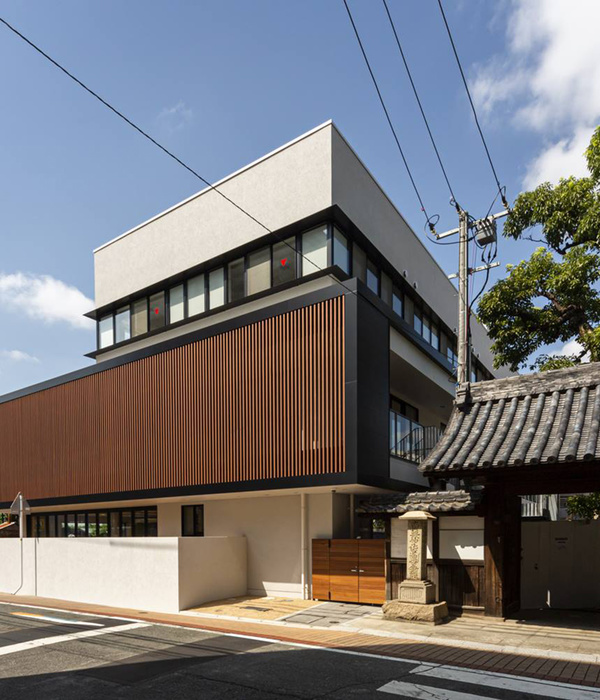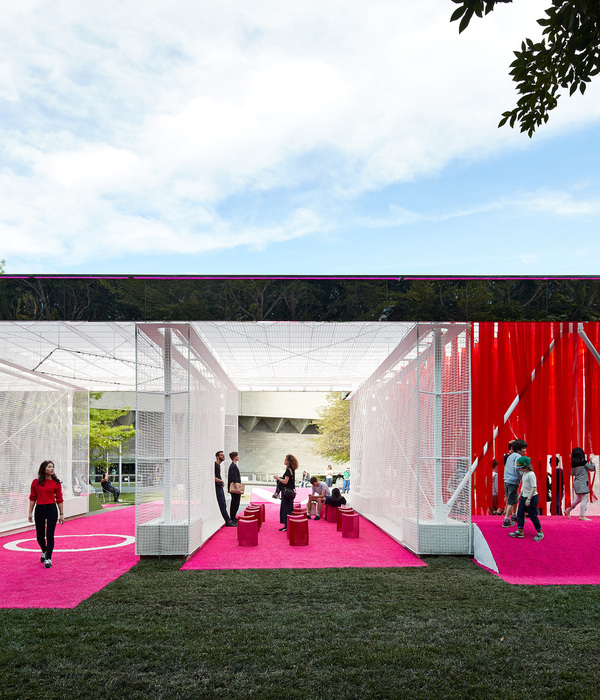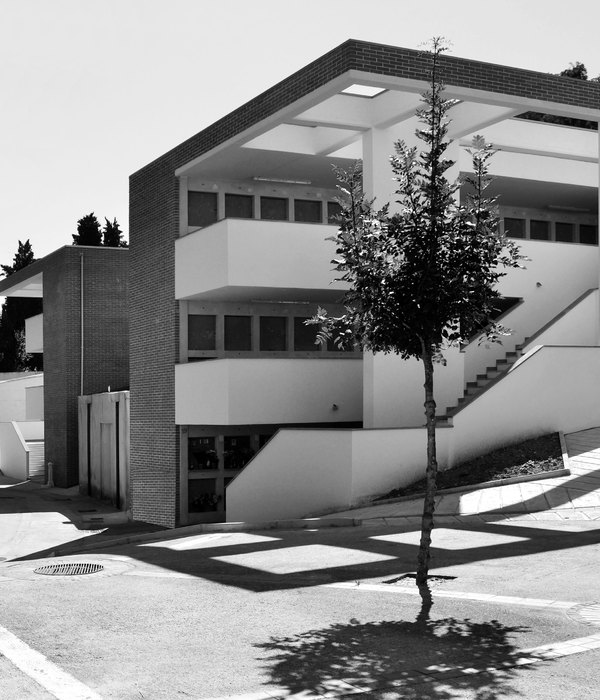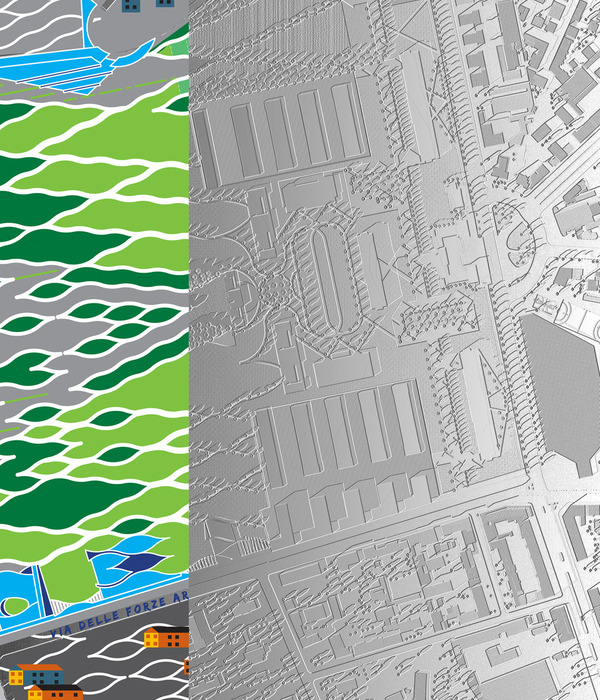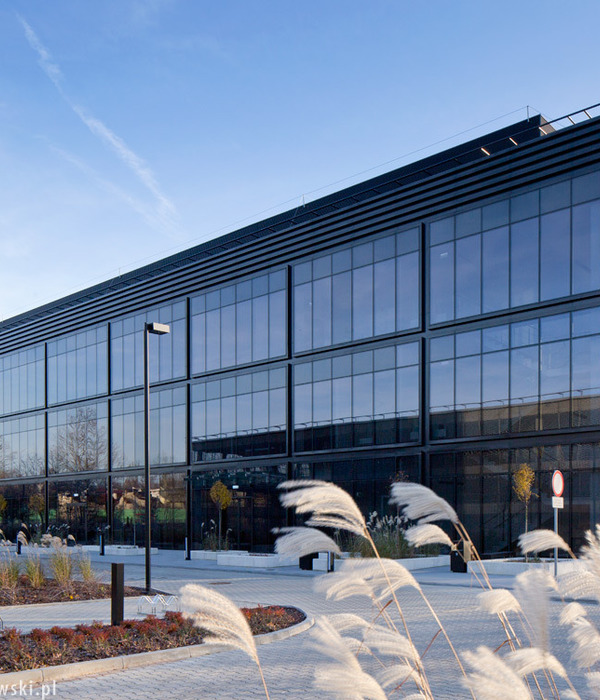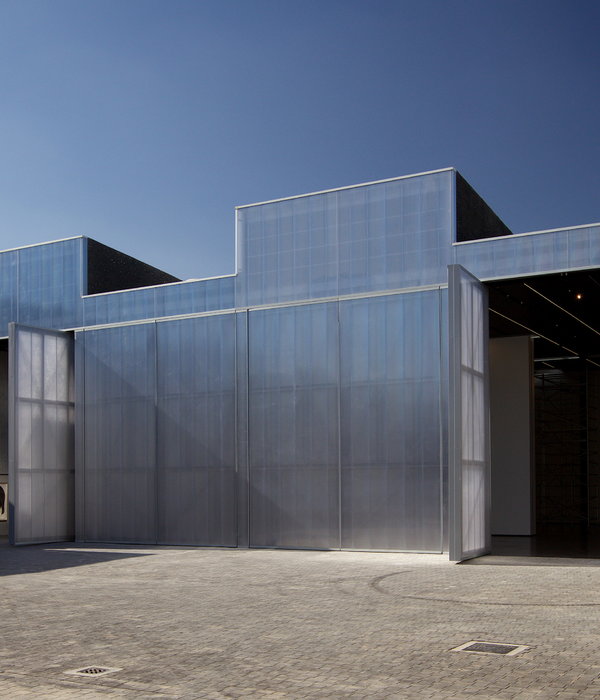Location:Palencia, Spain; | ;View Map
Project Year:2023
Category:Power Plants
This small building is the visible part of a whole that remains hidden from view. It is the head of a new energy infrastructure for the city of Palencia. A District Heating network promoted by the company DH Ecoenergías, a brave pioneer in the energy transformation of Spanish cities.
This small building is the visible part of a whole that remains hidden from view. It is the head of a new energy infrastructure for the city of Palencia. A District Heating network promoted by the company DH Ecoenergías, a brave pioneer in the energy transformation of Spanish cities. Palencia's network is the first of a long series of similar projects that seeks to decarbonize a good part of the national urban geography, turning off fossil fuel heaters - diesel and gas, costly internationally sourced - to replace them with a clean network, fueled by renewable resources that will largely come from an improved management of Spanish forests.
The District Heating network runs under the streets of the capital of Palencia, carrying hot water produced with renewable energies – mainly forest biomass – to buildings in a good part of the city. The Central, on the other hand, fulfils a technical function – hosting the hot water production processes – but at the same time, it has a markedly pedagogical vocation desired by the client: to make the transformation visible and support and allow its dissemination. This double condition requires the approach to the problem of industrial construction not only as a strictly functional matter, where only the economic performance of the building matters, but in a more broadly architectural way. In the words of Teo López, founder of DH Ecoenergías:
Thus, the architecture of the Central is symbolic, both in its geometry - based on energy and economic circularity - and in its materiality - which opts for literal and pedagogical transparency - presenting the whole as an identity. Two main elements make up the building: a bathtub of heavy concrete and a light steel and plastic lantern - recyclable. The base serves as support for all machinery and establishes terrestrial connections with the outside - through two large, galvanized steel gates - and with the biomass silo located underground. Inside, the concrete base has a cover that becomes a perimeter walkway that surrounds all the machinery. The pill-shaped floor allows optimal circulation of visitors around the complete energy process. The steel and plastic lantern reinterpret economical solutions typical of industrial buildings to establish a significant connection with the community it serves: a small cathedral of energy. The facade of polycarbonate sheets - ribbed on three scales - is configured as a soft whitish veil supported on a delicate galvanized and painted steel wire structure. As a final touch, a translucent tower expels the white smoke resulting from a filtering process that occupies most of the industrial space.
Studio: FRPO Rodríguez & Oriol
Author: Pablo Oriol, Fernando Rodríguez
Design team: Adrián Sánchez Castellano
Client: DH Ecoenergías
Photographer: Luis Asín
MEP services: DH Ecoenergías
Structure: Mecanismo Ingeniería
Quantity surveyor: Jesús Eguren
Landscape: Juan Tur
Facade: Nummit
Measurements: Marc Buxó
1. Polycarbonate — Polimertecnic
2. Roofing system — Creavi
3. Roof waterproofing — BMI
4. Boilers — Uniconfort
5. Bag filters — American Air Filter
▼项目更多图片
{{item.text_origin}}

